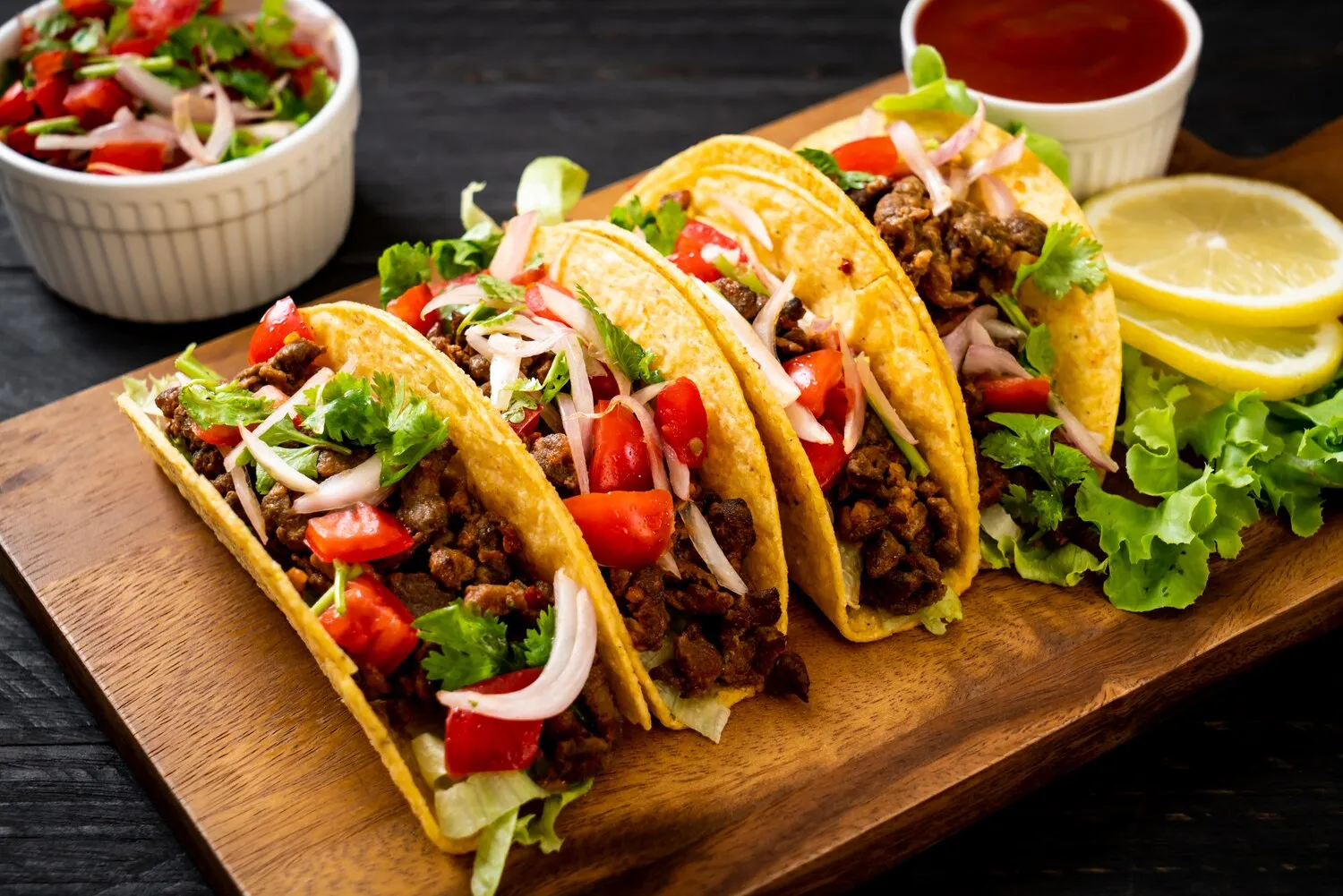
Carne Adovada
Pork marinated in red chile, served with rice and beans.
Nutrition Facts
* The % Daily Value (DV) tells you how much a nutrient in a serving of food contributes to a daily diet. 2,000 calories a day is used for general nutrition advice.
Range Cafe Rio Grande
Carne Adovada's roots lie in the blending of Spanish and Indigenous culinary traditions in New Mexico. The Spanish introduced pork and, more importantly, chile peppers to the region. Over centuries, these ingredients were incorporated into local cuisine, eventually giving rise to distinctive dishes like Carne Adovada.
Carne Adovada is deeply ingrained in New Mexican culture, representing a culinary heritage passed down through generations. It's more than just a dish; it's a symbol of community, tradition, and the unique blend of cultures that define the region.
Fiesta Staple
Carne Adovada is often served during New Mexican fiestas, celebrations, and family gatherings, showcasing its central role in cultural events.
Family Recipes
Recipes for Carne Adovada are often closely guarded family secrets, with each family boasting their unique twist on the classic preparation.
Regional Pride
New Mexicans take immense pride in their Carne Adovada, considering it a signature dish that represents the state's culinary identity. It's a key component in the ongoing debate about New Mexico's official state dish.
Carne Adovada is characterized by its rich, savory, and spicy flavor profile. The key is the complex red chile sauce, which infuses the pork with earthy, fruity, and moderately fiery notes.
The dominant flavor is the New Mexican red chile, made from dried and ground chile pods (often Chimayo, Hatch, or similar varieties). These chiles impart a complex flavor that is fruity, earthy, and smoky, with a varying degree of heat depending on the specific chile. Pork is the protein, typically shoulder or butt, slow-cooked to tender perfection. Garlic, oregano, and cumin are common spices that complement the red chile. Vinegar or sometimes orange juice adds a touch of acidity to balance the richness. Rendered pork fat, or lard, sometimes used in the cooking process, contributes to the depth of flavor.
Chile Selection
The type and quality of red chile are crucial. Using authentic New Mexican red chile pods (Chimayo or Hatch are excellent) will significantly enhance the flavor. Adjust the amount of chile to control the level of spiciness.
Slow and Low Cooking
Slow cooking is key to tenderizing the pork and allowing the flavors to meld. A low temperature (simmering or braising) for several hours is recommended.
Pork Quality
Choose a cut of pork with good marbling, such as pork shoulder or butt. This will ensure that the meat remains moist and flavorful during the long cooking process.
Day-Old Flavor
Carne Adovada often tastes even better the next day, as the flavors have more time to meld together. Consider making it a day ahead of serving.
Explore additional New Mexican dishes and restaurants
Explore New MexicanDiscover top dining spots and culinary experiences in Albuquerque.
Explore AlbuquerqueLearn more about the food culture, restaurant scene, and culinary heritage of United States.
Explore United States